Yejian Lyu
Environment Reconstruction in Terahertz Monostatic Sensing: Joint Millimeter-level Geometry Mapping and Material Identification
Aug 14, 2025Abstract:Terahertz (THz) integrated sensing and communication (ISAC) offers high-speed communication alongside precise environmental sensing. This paper presents a computationally efficient framework for THz-based environment reconstruction by integrating connected component analysis (CCA)-assisted multipath component (MPC) estimation with a sliding-window refinement strategy. To start with, a monostatic sensing experiment is conducted in an indoor scenario using a vector network analyzer (VNA)-based sounder operating from 290 to 310 GHz. On one hand, as for geometry mapping, a CCA-based region search is employed to accelerate parameter extraction, significantly reducing the search space for space-alternating generalized expectation-maximization (SAGE)-based estimation and achieving an 8.4 times acceleration, while preserving resolution. Further analysis of the connected component structure enables the identification of indoor features such as flat walls and corners. A sliding-window refinement applied to the identified regions improves geometric mapping, achieving the mean distance error of 4.9 mm, which is one order of magnitude better than the literature. On the other hand, the deterministic and stochastic components of the monostatic channel are classified through reflection loss analysis. Then, material identification is performed by looking up the reflection loss in a THz time-domain spectroscopy (THz-TDS) database, which comprises over 200 materials across a 0-6 THz range. Experimental results validate millimeter-level accuracy in geometry mapping and reliable material classification, enhancing the environmental awareness capabilities of THz ISAC systems.
Hybrid Channel Modeling and Environment Reconstruction for Terahertz Monostatic Sensing
Nov 12, 2024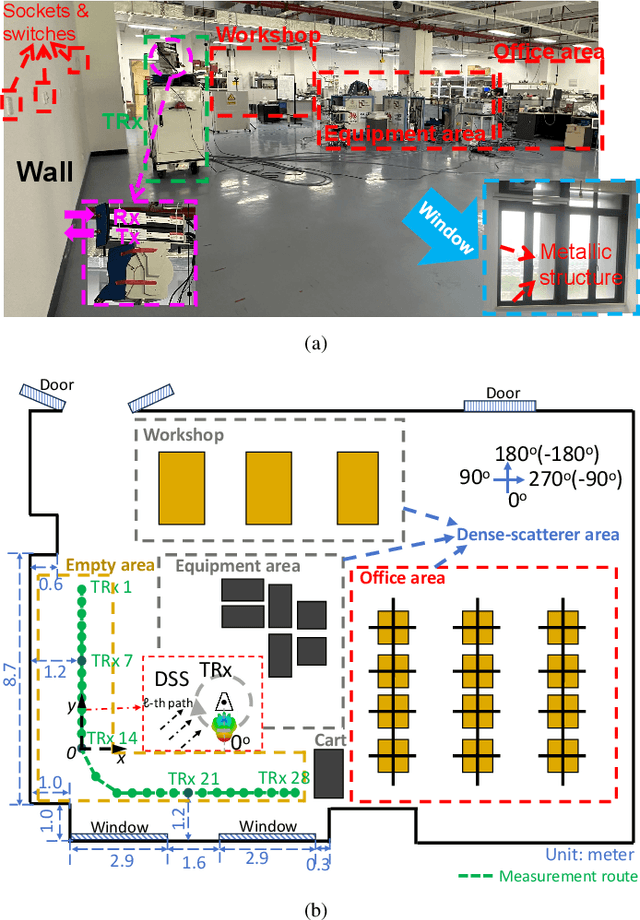
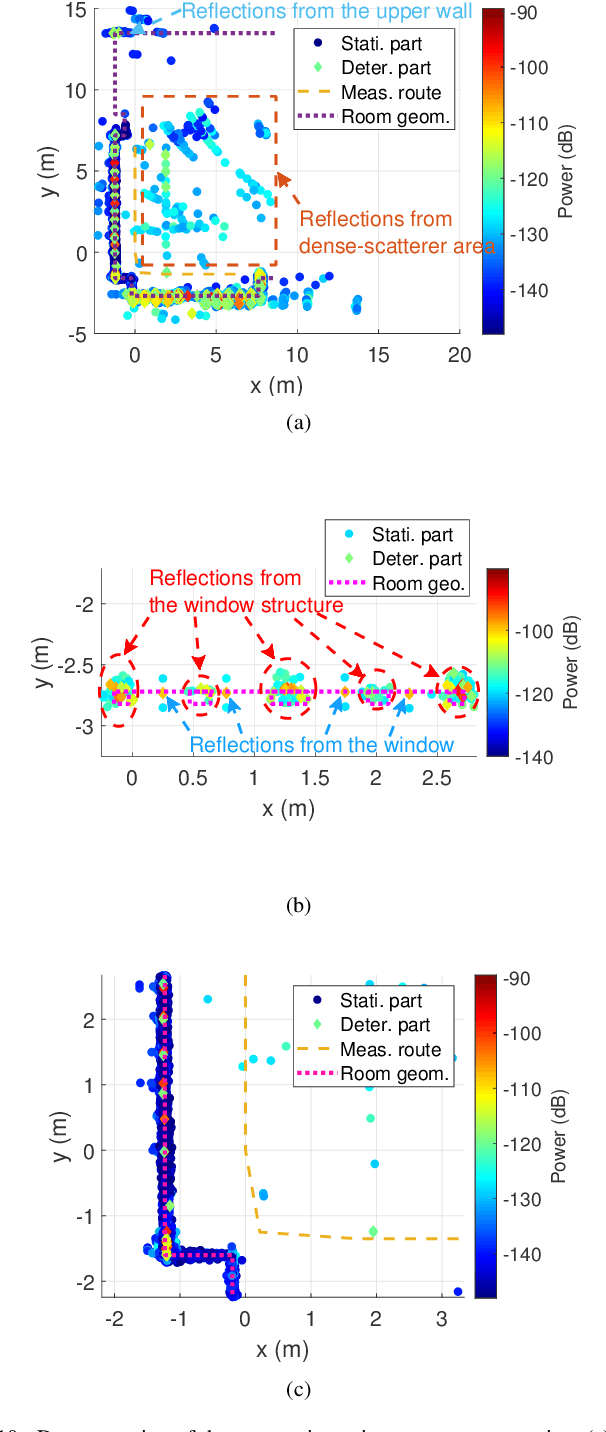

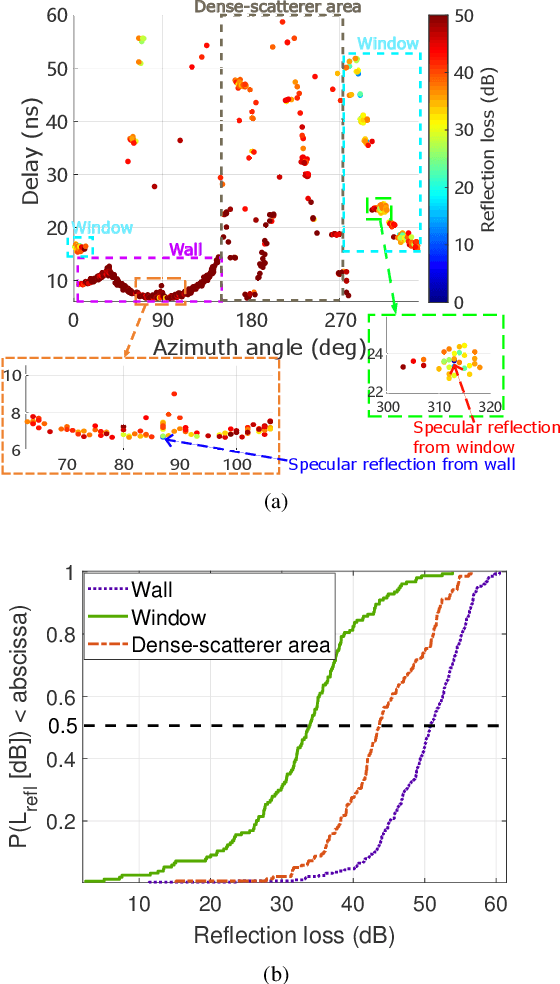
Abstract:THz ISAC aims to integrate novel functionalities, such as positioning and environmental sensing, into communication systems. Accurate channel modeling is crucial for the design and performance evaluation of future ISAC systems. In this paper, a THz measurement campaign for monostatic sensing is presented. VNA-based channel measurements are conducted in a laboratory scenario, where the transmitter and receiver are positioned together to mimic monostatic sensing. The centering frequency and measured bandwidth for these measurements are 300 GHz and 20 GHz, respectively. A DSS scheme is employed to capture spatial sensing channel profiles. Measurements are conducted across 28 transceiver locations arranged along an 'L'-shaped route. Then, an element-wise SAGE algorithm is used to estimate the MPC parameters, i.e., amplitude and delay. Specular and diffuse reflections are analyzed based on geometric principles and the estimated MPC parameters, where the effects from the radiation pattern are observed. A geometry-based MPC trajectory tracking algorithm is then proposed to classify the MPCs and de-embed the effects of the radiation pattern. Following this algorithm, a hybrid channel model is proposed based on the de-embedded MPC parameters. In this hybrid channel model for monostatic sensing, the MPCs are categorized into target-related and environment-related components. The target-related components are utilized for target detection and identification, while the environment-related ones focus on geometrical scenario reconstruction. A demonstration of geometrical environment reconstruction, along with an analysis of reflection loss for target identification, is subsequently presented. This work offers valuable insights into THz monostatic sensing channel modeling and the design of future THz ISAC systems.
Near-Field Channel Characterization for Mid-band ELAA Systems: Sounding, Parameter Estimation, and Modeling
May 10, 2024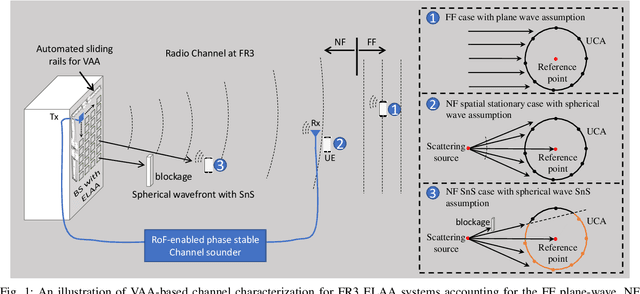
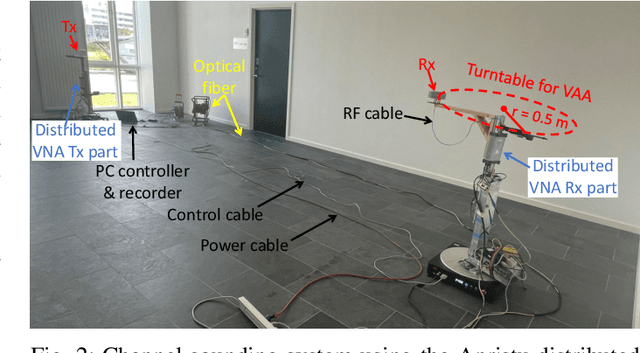
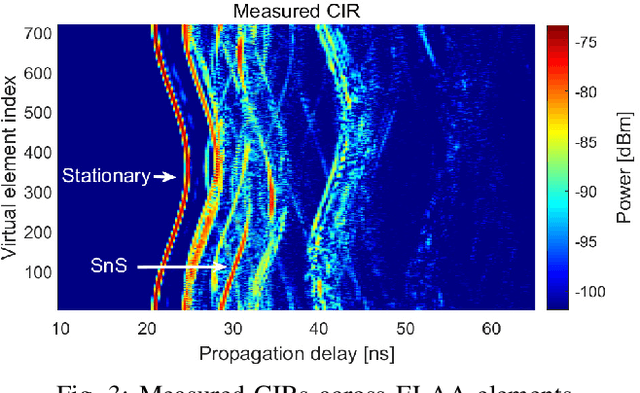
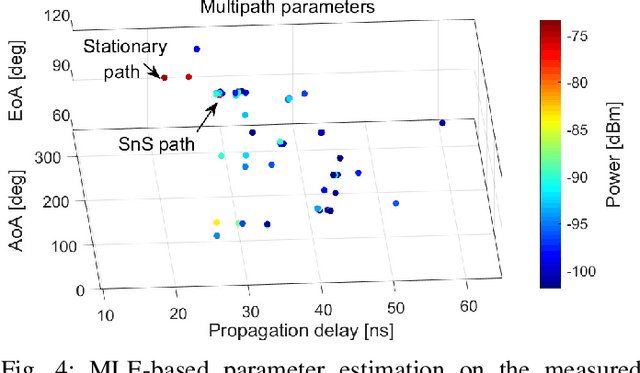
Abstract:6G communication will greatly benefit from using extremely large-scale antenna arrays (ELAAs) and new mid-band spectrums (7-24 GHz). These techniques require a thorough exploration of the challenges and potentials of the associated near-field (NF) phenomena. It is crucial to develop accurate NF channel models that include spherical wave propagation and spatial non-stationarity (SnS). However, channel measurement campaigns for mid-band ELAA systems have rarely been reported in the state-of-the-art. To this end, this work develops a channel sounder dedicated to mid-band ELAA systems based on a distributed modular vector network analyzer incorporating radio-over-fiber (RoF), phase compensation, and virtual antenna array schemes. This novel channel-sounding testbed based on off-the-shelf VNA has the potential to enable large-scale experimentation due to its generic and easy-accessible nature. The main challenges and solutions for developing NF channel models for mid-band ELAA systems are discussed, including channel sounders, multipath parameter estimation algorithms, and channel modeling frameworks. Besides, the study reports a measurement campaign in an indoor scenario using a 720-element virtual uniform circular array ELAA operating at {16-20} GHz, highlighting the presence of spherical wavefronts and spatial non-stationary effects. The effectiveness of the proposed near-field channel parameter estimator and channel modeling framework is also demonstrated using the measurement data.
Omni-directional Pathloss Measurement Based on Virtual Antenna Array with Directional Antennas
Aug 07, 2022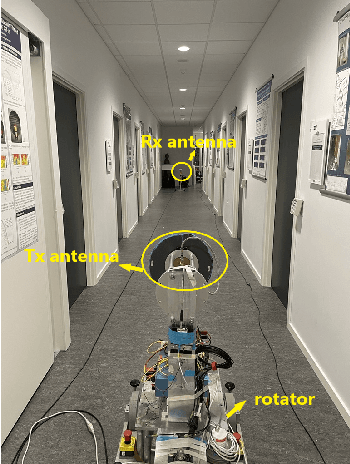
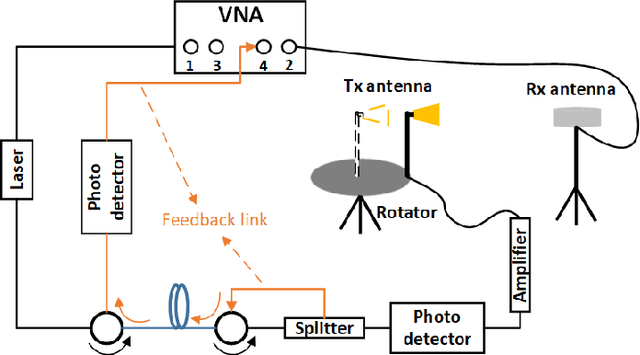

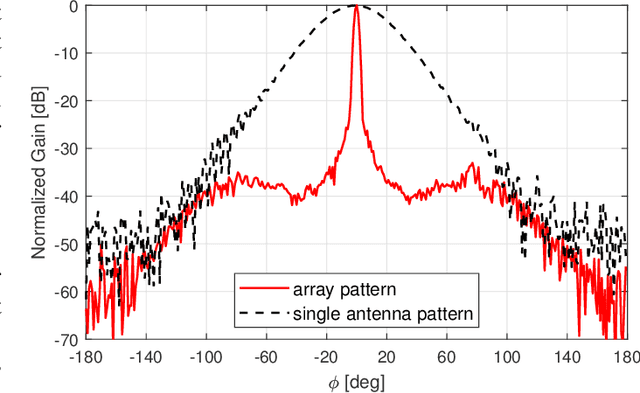
Abstract:Omni-directional pathloss, which refers to the pathloss when omni-directional antennas are used at the link ends, are essential for system design and evaluation. In the millimeter-wave (mm-Wave) and beyond bands, high gain directional antennas are widely used for channel measurements due to the significant signal attenuation. Conventional methods for omni-directional pathloss estimation are based on directional scanning sounding (DSS) system, i.e., a single directional antenna placed at the center of a rotator capturing signals from different rotation angles. The omni-directional pathloss is obtained by either summing up all the powers above the noise level or just summing up the powers of detected propagation paths. However, both methods are problematic with relatively wide main beams and high side-lobes provided by the directional antennas. In this letter, directional antenna based virtual antenna array (VAA) system is implemented for omni-directional pathloss estimation. The VAA scheme uses the same measurement system as the DSS, yet it offers high angular resolution (i.e. narrow main beam) and low side-lobes, which is essential for achieving accurate multipath detection in the power angular delay profiles (PADPs) and thereby obtaining accurate omni-directional pathloss. A measurement campaign was designed and conducted in an indoor corridor at 28-30 GHz to verify the effectiveness of the proposed method.
 Add to Chrome
Add to Chrome Add to Firefox
Add to Firefox Add to Edge
Add to Edge